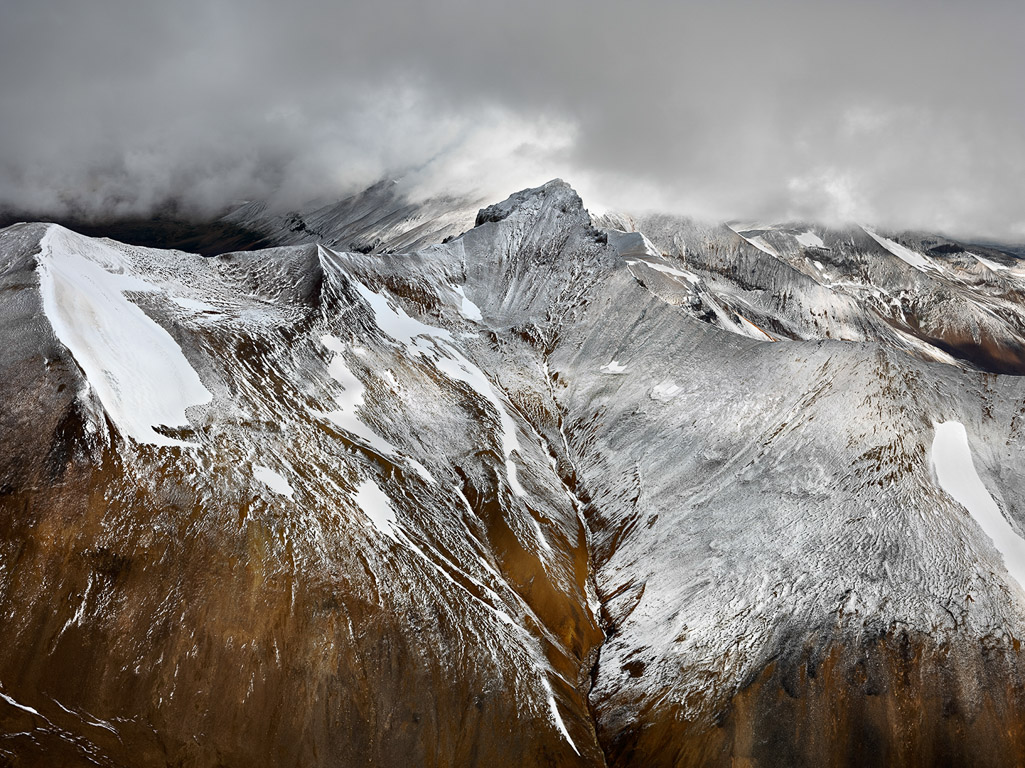Gar Smith, artist, photographer (born 1946 in Toronto, ON). Gar Smith’s career as an artist occurred within a colourful and prolific 20-year period between 1968 and 1988. For those two decades, he made searching and stridently virtuoso art that included groundbreaking photography (Noon, 1968; Notes on Light, 1969–70; Avenir, 1973), camera-less photography (Earth Stars, Future Markets, 1978), and sculptures of bells (I Give Bliss, I Give Warning, 1985). His final bell work was made for the Canadian embassy building in Tokyo in 1988. Then, rather curiously, Smith ceased making any more art.

Early Life and Career
Gar Smith was born in Toronto in 1946. The most formative part of his education was at the University of Toronto’s School of Architecture from 1965 to 1968. His first significant work as an artist — a groundbreaking photographic piece titled Noon — was made in 1968 while he was still an architecture student.
Noon was a generative photographic piece, metaphysically arresting and rich with implications for the work that would follow. In Noon, Smith pointed his camera straight up to the sky to capture the blue sky overhead on a sunny day. Part of viewing Noon consisted not only of what you saw in the photograph but also what you thought — or posited — was also there: blue air and blue airlessness, plus the chemical swarming of atoms, pixels and drifts of coloured light — lyrical and technical effects in concert. In the end, Noon has no subject but subjecthood itself. It also possessed a procedural efficiency that informed everything Smith did over the next couple of decades.
Notes on Light
The work that securely established Gar Smith’s reputation as an artist was Notes on Light (1969–70). Trading the momentary verticality of Noon for a new, time-invested, epic horizontality, Notes on Light was predicated upon Smith having travelled across Canada via the Trans-Canada Highway, documenting and cataloguing the country’s sunrises and sunsets. Smith conceptually systematized this ambitious scheme by dividing the country into 30 sections, each 265 km wide.
After driving across each of his designated segments, Smith stopped and took 40 photographs, one every two minutes — 20 facing east at sunrise and 20 facing west at sunset. This taxonomy effectively anatomized the waxing and waning of the country’s planetary light. The resulting exhibition at The Isaacs Gallery in Toronto in 1970 was organized as a phalanx of slide projectors projecting 1,200 images onto the gallery wall comprising Smith’s panorama. The exhibition was then mounted at the National Gallery of Canada in Ottawa, the Vancouver Art Gallery and the Paris Biennale in France. Smith was only 24 years old.
He quickly followed Notes on Light with a witty, almost bleakly irreverent exhibition called Notes on Light: Prints and Flags (1971). This cunning exercise in de-romanticization consisted of grainy, black-and-white photostats made from some of the lushly coloured slides comprising Notes on Light. Gone were the opulent, technicolor rhapsodies of the year before. What was left was residue. Strained documentary. An almost hostile distrust of and withdrawal from easy beauty.
Avenir
After these exhibitions, Gar Smith travelled for a few years through Europe, Africa, India and parts of Asia, documenting his journey — and especially the people he encountered — in a 16 mm film diary. When he returned to Canada, he enlarged 275 of his speedily filmed portraits into black-and-white 35 mm stills. He exhibited them in 1973 in an exhibition called Avenir (“The Future”) at the Art Gallery of OntarioThere was a spontaneous, almost offhand quality to these portraits that, as with the earlier black-and-white skyscapes, effectively short-circuited any kind of crowd-pleasing prettiness or the inauthentic comforts of a too-willed beauty.

Camera-less Photography
After the portraits came a prolific sojourn into camera-less photography. Gar Smith left sheets of photo paper out in the light, trained laser beams on them, and scattered baguette crumbs (Earth Stars, Future Markets, 1978), oil droplets, lentils, pennies or, in a lengthy series of increasingly provocative explorations, bullets on them. Not so much visually decorative as politically troubling, these forceful photograms served as proclamations about world hunger, societal unrest and nascent violence. They were much ahead of their time.
Similarly, the ambitious, print-like castings Smith made from 1985 to 1988 of actual outcroppings of the Canadian Shield in northern Ontario were also ahead of their years. After being brushed with liquid latex and waiting for the latex to harden, his chosen rock surfaces provided molds for Smith to make strange eloquent mask-like, bell-metal casts. The mute (and too often suffering) land was thus anthropomorphized. Smith made the rock face speak.
Bell Sculptures
The latter period of Gar Smith’s career was characterized by his astonishing bell sculptures. The first of them (which were more gongs than bells) were made in 1975. Inspired by his time living in India, Smith began making bronze casts of the Indian bread chapati. Hunger thus became communicable sound. In 1981, for an exhibition called The Food of Love, Smith cast cheap French Duralex dishes into brass bells, offering music as the food of love
Central to Smith’s making of bells — and central to the meaning of the whole transformative arc of his work — is the superbly authoritative brass bells he produced for his virtuoso 1985 exhibition, I Give Bliss, I Give Warning. This suite of bells took the historically charged shapes of human fabrication: a cathedral spire, a grain elevator, a smokestack, a skyscraper, a lighthouse, a missile shell and a towering plinth shaped like Cleopatra’s needle. It was the built world, swarmed with rapture, tinctured with the demonic.
His final bell work — for the Canadian embassy building in Tokyo, Japan — is almost apocalyptic in spirit and performance. Two gigantic, 21 metre-wide, 1,400 kg bells arc through the building like huge parentheses, one over water, one over a bridge. They are “played” by the movement of wind moving over their variegated surfaces.

Collections
The York University Archives and Special Collections holds some of Smith’s correspondences. Notes on Light is held at the National Gallery of Canada and The Food of Love is held at the Winnipeg Art Gallery. The Canada Council Art Bank also holds several other pieces.

 Share on Facebook
Share on Facebook Share on X
Share on X Share by Email
Share by Email Share on Google Classroom
Share on Google Classroom






